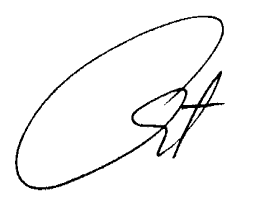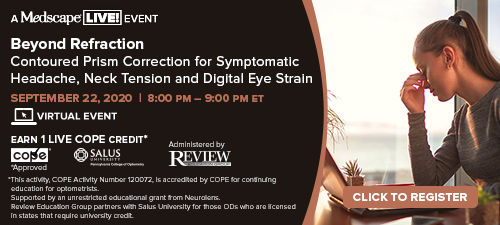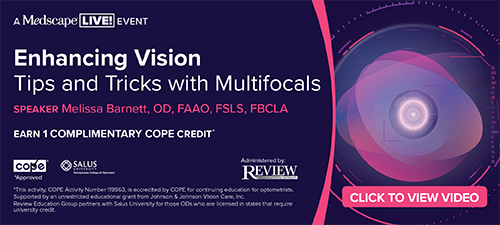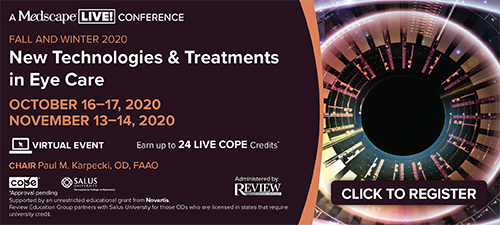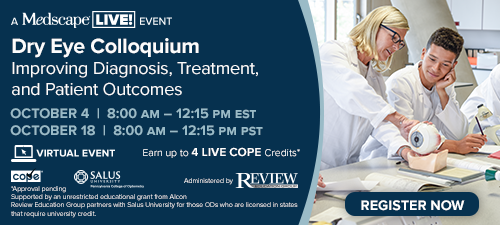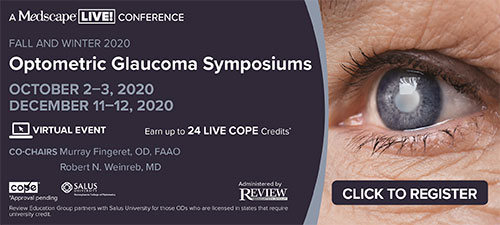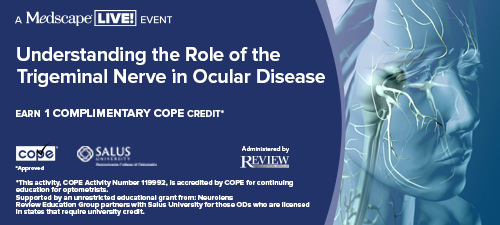
A
weekly e-journal by Art Epstein, OD, FAAO
Off the Cuff: Imagine
I never gave much thought to the future, I just expected that it would come. Today I look at things differently and I try to see things with a broader perspective. Consider this not unlikely possibility: Two years from now, COVID is still with us, making headlines and disrupting life. The virus still isn’t fully understood, not surprising for a carefully engineered weapon. Worldwide, well over 100 million have been infected—some several times, and the global death toll is approaching 3 million. In the US, 20 million have been infected and more than 350,000 have died. A safe and effective vaccine remains elusive. COVID is even more unpredictable than first imagined, and the second wave that hit big cities on the East and West Coasts was much more devastating than the first. More than two years into the pandemic, life has changed. Supply chains have been stretched, and sporadic shortages of essential goods are frequent. Masks are finally socially accepted and, thankfully, nearly universal. Air travel still hasn’t recovered, and only one government-subsidized major carrier remains of the once big three. With infection vectors better understood, the impact of COVID on business has been massive. Broadway has remained shuttered, and movie theatres have converted to environmentally controlled filtered pods. Every cruise line in the world has sunk. Of the restaurants that survived, most business is takeout. Amazon and delivery services are thriving. Healthcare, like most essential services, has adapted to the continuing crisis. Telemedicine has finally caught on in some specialties, and practice patterns have changed. Nowhere has the transformation been more apparent and disruptive than in education and traditional meetings. Education has gone totally virtual, and every state now accepts virtual CE for licensure credit. With large gatherings illegal, bigger meetings like SECO, the Vision Expos and the Academy meeting are distant memories. Attempts at taking them virtual failed, undone by the broad and near-constant availability of free online CE. While I hope that the scenario I just painted doesn’t happen, simple extrapolation of current data and trends suggests that it is very much in the realm of possibility. Beyond the grim prognostication, thinking about that future affords some very interesting perspective. Imagine that without income from meetings and CE, Vision Expo, SECO, GWCO and the Academy would become non-viable. What would become of optometry without them? Now, imagine that they survive, but the AOA and every state organization fails. Where would optometry be then? It doesn’t take a nuclear physicist to realize that the AOA and our state organizations are essential to our profession’s future, but most of our other organizations, while they serve good purpose, are not essential. This leaves two reasonable and responsible conclusions. Merger and collaboration today or face a very uncertain future tomorrow.
|
|||||
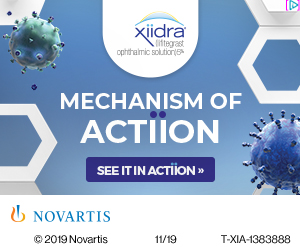 |
||
| Soft Contact Lens Wearers' Compliance During the Covid-19 Pandemic | ||||
Contact lens wearers need to maintain optimal hygiene practices during the COVID-19 pandemic to minimisz contact-lens complications including microbial keratitis and corneal infiltrative events. This online survey (UK and Ireland) explored contact lens wearers' compliance behaviors, attitudes and concerns during the pandemic. The 60-item anonymous online survey was distributed during a one-month period via Qualtrics (starting on April 14). The survey captured: a) demographic information, b) type of lenses worn and compliance with lens wear and care procedures, c) adherence to recommendations and d) concerns associated with contact lens wear during the pandemic. A total of 247 responses were received (34.3 ± 11.7 years old, 79% female). Seventy-nine percent of participants reported that they were self-isolating or rigorously following social distance advice. Fifty-six percent of participants reported using their lenses less during the pandemic. Eighty-seven percent of respondents reported following the recommended 20-second rule most times/every time, and 96% used soap and water during handwashing. Eleven percent of respondents admitted not following recommendations regarding disposal of lenses and 18% would not consider ceasing lens wear if unwell (with flu/cold) during the pandemic. |
||||
SOURCE: Vianya-Estopa M, Wolffsohn JS, Beukes E, et al. Soft Contact Lens Wearers' Compliance During The Covid-19 Pandemic. Cont Lens Anterior Eye. 2020; Aug 14. [Epub ahead of print]. |
||||
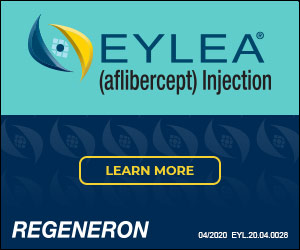 |
||
| Comparison of Different Types of Corneal Foreign Bodies Using Anterior Segment Optical Coherence Tomography: A Prospective Observational Study | ||||
This prospective, observational study highlighted the value of anterior segment optical coherence tomography (AS-OCT) for different types of corneal foreign bodies in humans. The patients included were divided into two groups. If the patients were directly diagnosed based on eye injury history and slit-lamp examination, then they were assigned to Group A. Otherwise, the patients were assigned to Group B. Researchers compared and described the characteristics of the corneal foreign body in both groups using AS-OCT. From October 2017 to January 2020, 36 eyes of 36 patients (9 females and 27 males) with a mean age of 37.8 ± 11.7 years were included in the study. Patients in Group A were the majority and accounted for 72.2% (26/36). High signals on AS-OCT images were the main constituent and accounted for 92.3% (24/26) in Group A and 70.0% (7/10) in Group B. Most of the patients in Group A, 96.2% (25/26), had clear boundaries. A blurred boundary was observed in 70% (7/10) of the patients in Group B. The foreign bodies on AS-OCT images had key characteristics of a high signal followed by a central zone shadowing effect, and a low signal followed by a marginal zone shadowing effect. Further, all of the lesions could be directly located in Group B, and 92.3% (24/26) of the patients in Group A did not have directly located lesions. Six representative cases are described in detail. AS-OCT is a valuable tool in the diagnosis and management of corneal foreign bodies, especially for unusual corneal foreign body.
|
||||
SOURCE: Wang T, Zhong L, Yin S, et al. Comparison of different types of corneal foreign bodies using anterior segment optical coherence tomography: a prospective observational study. J Ophthalmol. 2020; Aug 11. [Epub ahead of print]. |
||||
| Comparisons of Atropine Versus Cyclopentolate Cycloplegia in Myopic Children | ||||
In clinical practice, 1% atropine and 1% cyclopentolate are used as cycloplegia agents to diagnose refractive error. The influence of 1% atropine on ocular biometry is obscure, and the impact of 1% cyclopentolate remains controversial. This study aimed to compare the effects of atropine vs. cyclopentolate cycloplegia on ocular biometry in myopic children and to determine the sites of action for atropine. A total of 207 myopic children, ages 6 to 12 years, were included in the analysis. All participants underwent comprehensive eye examinations before and after cyclopentolate cycloplegia, after which they were randomly assigned into two groups: A and B, in a ratio of 1:1, to receive 1% or 0.01% atropine, respectively. The treatment was administered once every night for a week. Participants were re-examined one week later. Cyclopentolate cycloplegia caused a decrease in choroidal thickness (-3 ± 9 μm), elongation of axial length (9 ± 16 μm), loss of lens power (-0.14 ± 0.37 dioptre) and a hyperopic shift (0.14 ± 0.22 diopter) in both groups. However, ocular biometry showed different changes after one-week use of 1% or 0.01% atropine. In Group A, choroid thickening (24 ± 13 μm) and reduced axial length (-30 ± 27 μm) were observed after atropine cycloplegia, with greater changes in lens power (0.50 ± 0.37 diopter) and spherical equivalent (0.52 ± 0.23 diopter). Group B showed a slight increase in choroidal thickness following one-week use of 0.01% atropine (6 ± 9 μm), but other biometric measures showed no significant changes. |
||||
SOURCE: Luyao Ye, Shanshan Li, Ya Shi, et al. Comparisons of atropine versus cyclopentolate cycloplegia in myopic children. Clin Exp Optom. 2020 Aug 25. Online ahead of print. |
||||
| News & Notes | ||||||||
| AAOF Names Recipients of Bert C. and Lydia M. Corwin Contact Lens Residency Award, Fredric Rosemore Low Vision Educational Grant, Hopkins Comprehensive Eye Care Award and Johnson & Johnson Vision Residency Award The American Academy of Optometry Foundation announced Kimberly Weisenberger, OD, MS, is this year’s recipient of the Bert C. and Lydia M. Corwin Contact Lens Residency award. Dr. Weisenberger is a resident cornea and contact lens advanced practice fellow at The Ohio State University College of Optometry. Read more. The AAOF also announced, in collaboration with the Fredric and Marion Rosemore Family Foundation, the recipient of the Fredric Rosemore Low Vision Educational Grant is Nicole Christie Ross, OD, MSc, FAAO, an assistant professor of optometry in the Department of Specialty & Advanced Care at the New England College of Optometry. Read more. In addition, the AAOF announced Charlotte Yiyi Wang, OD, is this year’s recipient of the Hopkins Comprehensive Eye Care Award. Dr. Wang is a graduate of the University of California, Berkeley School of Optometry, and primary care/community health resident at the Meredith W. Morgan University Eye Center. Read more. As well, the AAOF announced the recipients of the Johnson & Johnson Vision Residency Awards. Each recipient will receive $2,000 toward their graduate education, thanks to continued support from Johnson & Johnson Vision. Read more. |
||||||||
|
||||||||
| Foundation Fighting Blindness Commits $6.5 Million for Retinal Disease Research Grants The Foundation Fighting Blindness announced $6.5 million in funding for 15 new grants, bringing its research portfolio to a total of 84 grants. The projects were selected from 134 proposal submissions made by investigators in fall 2019. The submissions were evaluated by the Foundation’s Scientific Advisory Board, including some of the world’s top retinal disease experts. Read summaries of newly funded grants. |
||||||||
|
||||||||
| Prevent Blindness Data Shows Basketball as Cause of Most Sports-related Eye Injuries, Kicks Off Virtual Persons of Vision Award Event Honoring VSP Global According to data from Prevent Blindness, more eye injuries occur from basketball than any other sport. Pools & Water Sports is the category with the second highest cause of sports-related eye injury. Prevent Blindness has declared September as Sports Eye Safety Month to help educate the public on the best ways to protect eyes and keep vision healthy while playing sports. According to the American Academy of Ophthalmology, 90 percent of serious eye injuries could be prevented by wearing appropriate protective eyewear. Additionally, the AAO recommends that spectators at sporting events should also be careful. Read more. In addition, Prevent Blindness announced the 2020 Persons of Vision Award ceremony will be held as part of a series of virtual celebrations in September. VSP Global was selected as the recipient of the Persons of Vision Award for its 65-year commitment to a mission of helping people see, as well as its long-term support and partnership with Prevent Blindness. In lieu of the in-person gala, Prevent Blindness will host online activities beginning September 1, including an online auction. Learn more. |
||||||||
|
||||||||
| IDOC Launches New Social Media Marketing Service IDOC launched a new marketing service designed to tap the potential of popular online social platforms, including Facebook and Instagram. IDOC Social Media provides customized weekly posts that reflect the activities, voice and culture of each participating practice. The new social media marketing service uses monthly consultations, collaboration and coaching to set goals, establish priorities and more effectively plan promotional content. Learn more. |
||||||||
|
||||||||
|
||||||||
|
||||||||
|
||||||||
|
Optometric Physician™ (OP) newsletter is owned and published by Dr. Arthur Epstein. It is distributed by the Review Group, a Division of Jobson Medical Information LLC (JMI), 19 Campus Boulevard, Newtown Square, PA 19073. HOW TO ADVERTISE |

